I went to a local fermentation meetup group about a year ago, eager to learn more about how to make kombucha tea at home, and in the process I stumbled across a “new” (at least to me) type of fermented drink called water kefir.
Water kefir has actually been around for thousands of years and goes by many different names including Japanese water crystals. The girl who had brewed this tasty lightly carbonated concoction had flavored it with fresh blueberries after it had been fermented. I was immediately impressed by the versatility of this probiotic wonder drink-which is purported to contain trillions of naturally healthy bacteria to aid digestion and the immune system.
Unlike milk kefir, water kefir is perfect for those who are lactose intolerant, while often times milk kefir is more easily digestible there is still some chance of a reaction. This summer I decided to try brewing my own water kefir and found that it’s actually quite easy to prepare-and easier and more fool-proof than kombucha.
Here is a basic water kefir recipe that helped me get started:
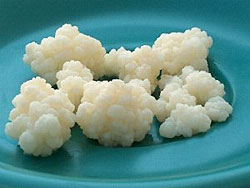
1) Fill a quart sized jar with room temperature mineral water* leaving about 2 inches of space at the top *(or spring or tap water with most of the chlorine filtered out. Reverse osmosis water isn’t recommended, although I have tried it without ill effect. The main thing to remember is that minerals are beneficial to the functioning of water kefir grains, so if they’re not getting minerals from the water, some mineral rich fruit should be added)
2) Add approximately 1/4 cup sugar and stir
3) Add 1/4 cup Water Kefir Grains – | Our Recommended Starters
4) If available add 1/4 cup starter water kefir, otherwise you can add a couple lemon slices to the brew.
5) Then wrap a small handful of dried un-sulfured fruit into an unbleached coffee filter or a reusable fabric pouch (So far I have tried: dates, dried mango slices, raisins, cranberries, dried apple, figs, and apricots or a combination thereof) – don’t be afraid to experiment with your water kefir recipe.
I’ve also tried dried candied ginger in my primary ferment. Maybe it was just me, but that batch seemed a little flat. I’ve had great success with adding fresh ginger to the primary ferment as well as to the secondary ferment though.
Water Kefir Recipe Fermentation Stages and Tips:
I then cover the jar with a coffee filter or other breathable material, secured with a rubber band (if you are using metal try to make sure the rim is completely dry before securing so the metal won’t rub off and contaminate your grains).
I leave the brew alone at room temperature for 2, sometimes 3 days. The longer it brews the stronger the flavor starts to get and the more carbonation it will acquire. If you like a sweeter more soda pop taste, one day might be sufficient. You can sample the brew or give it a stir now and then with a wooden spoon.
After the primary ferment, I’ll usually do a secondary ferment. This involves straining out the water kefir grains for the next batch, discarding the fruit, and then bottling the water kefir (minus 1/4th cup for your starter) in a sealed container and then letting it sit on the counter for 1-3 days to add even more carbonation.
You should leave about an inch of head space and crack the lid open every few hours for just a quick burp to let some of the gases escape (this helps prevent the bottle from bursting). Recently we’ve been using a Grolsch type bottle (flip-top) for the second ferment. This has been giving us really great carbonation – it is like opening a bottle of bubbly!
Although, be careful not to let the kefir ferment too long in a Grolsch bottle as we have had some shoot to the ceiling!

Before putting the finished water kefir into the fridge I also like to tape on a label with all pertinent info that I’ll soon forget-like what ingredients I used, when the primary ferment began and ended, if and how long the secondary ferment lasted, and my impression-like “wow, super fizzy.”
Alcohol Content of Water Kefir
One word of caution, I’ve heard that the more carbonated it is, the higher the alcohol content. I believe the alcohol % in water kefir is a fairly trivial amount like less than 0.8% but it bears mentioning. Part of what sparked my renewed interest in water kefir is that the kombucha I usually buy at the store was recalled because they were having trouble keeping the alcohol content below 0.5% and it ran into regulatory issues.
I actually tried a water kefir recipe last week that reminded me of the Kombucha Botanica Elderflower I used to buy and love. I used one dried fig and some raisins in a full 3 day primary ferment.
It was really potent-maybe too potent so I decided to skip the secondary ferment and put it in the fridge for 5 days—and when I took a cautious sample, it was irresistibly delicious.
I’m still new at this little hobby and am eager to learn more about fermented foods and water kefir health benefits. I’ve purchased a book that came highly recommended called Wild Fermentation: The Flavor, Nutrition, and Craft of Live-Culture Foods that has a bunch of water kefir recipes to try – I look forward to continuing this experiment!
If you have a favorite water kefir recipe please share in a comment below – I love trying new water kefir recipes and concoctions.

 Earth Friendly Goodies If it's Good for the Earth it's Good for Your Health
Earth Friendly Goodies If it's Good for the Earth it's Good for Your Health 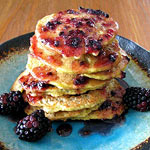
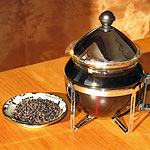
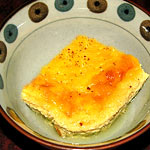
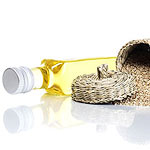
I’ve been wanting to try this for quite a while. Thanks for sharing (visiting from Fight Back Friday)!
I have to confess, I had never heard of water kefir before – very interesting post!
I am so excited to try this. I have used the body ecology diet grains to make milk based kefir and coconut water kefir. Water kefir sounds interesting. I’ll be checking back to your site often.
Thanks for taking the time to comment Katie, April and Amy
– Amy coconut water kefir sounds nummy. My water kefir experiment is tasting better and better, but I have to confess I’m not sticking to protocol—you’re supposed to keep your ferments in separate locations to prevent cross contamination–but I put my kombucha in a jar right next to my water kefir..and the kombucha is starting to make it’s way over into the water kefir-there’s a very thin little film on top–but it tastes so darn good, it’s exactly the flavor I was hoping for!! I like it better than plain kombucha or plain water kefir, so I’m just going to keep doing it, rebel that I am, and hope this experiment keeps up the good work.
You go girls:)
I love my Water Kefir really simple- a little bit of fresh grated ginger juice, & lemon juice (in the second fermentation).
YUMM!
But, I’ve never heard of leaving a bit of starter for the next batch in Water Kefir. I do that for my Kombucha (to keep it sterile), but not for Water Kefir. Have you got WK powder, or the fresh grains?
You need real LIVE fresh Water Kefir grains, as you don’t need to do this for them. They last indefinitely, as long as they’re looked after, too, so this is a great bonus. A top source of Pro-biotics!
Thanks Anita for your question and for sharing your water kefir recipe (sounds yummy!)
As far as I know I have live kefir grains (it’s not the powder), though that is an interesting question and now you’ve got me wondering something else-how exactly would I know for sure what the state of my water kefir grain’s health is anyway?…I mean with kombucha, I can always tell it’s thriving because there’s a huge baby scoby forming on top, but the water kefir grains are far more subtle and it’s hard to tell if they’re actively reproducing-if they are it’s slow and gradual. The flavor is still pleasing though, so for now I am just trusting that if I like the way it tastes, it must be ok to drink-but I’m going to have to look into this some more.
Very interesting concept. There are so many natural ingredients that are available to help our complex bodies function properly that it’s too bad we haven’t discovered them yet. I didn’t realize that you could actually purchase this or make it yourself. If I might ask, which method is more economical?
Thanks for your comment, Dave. I actually have not yet seen water kefir at the store, so I’m not sure what the going rate is-however, from experience, just about anything you drink regularly will be much cheaper to make yourself. After the initial investment to buy the kefir grains, you mainly just need sugar, some sort of unsulphured dried fruit, coffee filters and water—it’s not what I would call an expensive hobby by any means-however, if you do not drink it regularly, and don’t have much counter space, I can see how it would be more convenient to just buy a bottle or two during the month.
Ginger is my favorite “flavoring.” The kefir grains seem to like it as well. Sometimes I put chunks of fresh ginger straight into the water with the grains but more recently I’ve been grating ginger, pouring boiling water over it, letting it cool to room temp, then straining the “tea” into the grains. It gives a wonderfully gingery flavor, the grains love it, and I don’t have to fish out chunks or tie anything up in a bag.
I’m now seeing water kefir in the store. I can’t believe that people will pay that much money for something that’s so cheap and easy to make at home 🙂
That’s a great idea Rachel! I just started water kefiring thanks to Sandra – it sure is fun trying new blends. I’ve tried ginger in the primary ferment but I’ll have to try your ginger “tea” method. Actually today I was planning on using some homemade ginger ale in a second ferment to see how that goes.
I don’t know that I’ve seen water kefir in the store yet – although Good Belly has a probiotic drink that is very similar. You’re right it is so easy (and fun) to make at home.
I like the recipe. I am gonna have to try out some time and see the outcome. Great article!